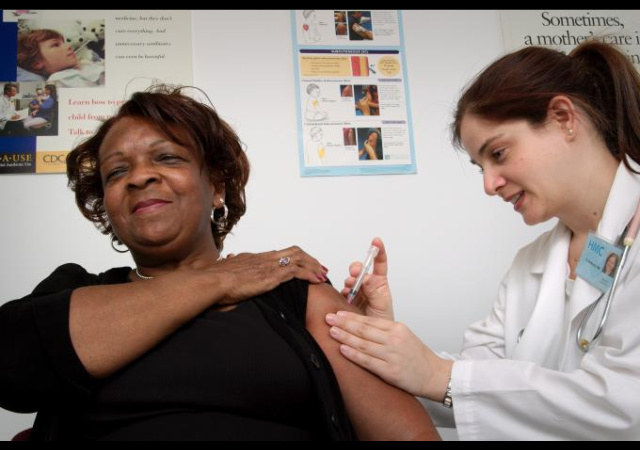Is Drug-Resistant Typhoid the Next Global Health Emergency?
“The current resurgence of XDR typhoid bears the biosocial footprint of more than half a century of antibiotic-intensive international neglect.”

Los Angeles area public health officials have reported that more than 1,000 homeless people died in the county last year, double the number of deaths from six years ago.
The LA county public health department reported this week that 1,047 homeless people died last year, a number that has steadily increased every year since 2013, when 536 people died. The leading causes of death were coronary heart disease, which accounted for 22% of deaths, followed by alcohol and drug overdose at 21%, transportation-related injuries at 9%, homicides at 6% and suicides at 5%.
That is only 63% of the total. How many of these homeless people have died of infectious diseases, such as typhoid fever? Typhoid, a potentially fatal bacterial disease transmitted through contact with contaminated fecal matter, was reported in the area last year.
Whatever those numbers are for 2019, the reports are likely to increase in 2020. New, robustly drug-resistant variants of typhoid are now spreading across international borders.
Cases have been reported in Pakistan, India, Bangladesh, the Philippines, Iraq, Guatemala, UK, US, and Germany, as well as more recently in Australia and Canada. In recent years, drug resistant and travel-associated typhoid variants have also been spreading through the African continent. Under-reporting and international surveillance gaps mean that drug-resistant typhoid is probably even more extensive than we think.
Causing fever, headache, abdominal pain and constipation or diarrhoea, typhoid is a bacterial disease. Salmonella enterica serovar Typhi—the organism behind typhoid—kills up to one in five patients if left untreated. S. Typhi spreads from person to person in water and food, which have been contaminated by faeces. As a consequence, typhoid is often associated with inadequate sanitation and water systems, as well as with poor hygiene practices.
The rapid rise of increasingly difficult to treat typhoid is a very worrying prospect. During an age of unparalleled international trade and travel, it is inevitable that any regional rise of antibiotic resistance will have global knock-on effects.
A contributing factor to this development is the reliance on antibiotics in third world countries instead of enhanced sanitation that is found in more developed nations (except, it seems, parts of California).
Dr Claas Kirchhelle, of the Wellcome Unit for History of Medicine at the University of Oxford, said: “Popular notions of typhoid as a disease of the past are a myth.
“For poorer countries, the spectre of typhoid has never gone away.
“Over the last decades, international neglect, lacking sanitary infrastructures and vaccine programmes, and compensatory reliance on antibiotics have resulted in a situation where typhoid is increasingly difficult to treat.
“The current resurgence of XDR typhoid bears the biosocial footprint of more than half a century of antibiotic-intensive international neglect.”
For example, the Ireland Health Protection Surveillance Centre (HPSC) is reporting a significant increase in typhoid fever cases this year.
Historically, about nine cases of typhoid are reported annually in Ireland with India being the most common country where travelers contracted the disease.
In 2019 to date, there have been 23 typhoid notifications, twelve of which reported recent travel to Pakistan. Seven of these Pakistan-associated cases were less than 15 years of age.
Three of those cases are the drug-resistant variety.
 DONATE
DONATE
Donations tax deductible
to the full extent allowed by law.








Comments
Great. Another global disease for the globalists exploit.
Seal the borders already!!!
Import the third world, become the third world.
If it is left up to Governor Gruesome of the CaCa Terrorist state……Yes.
San Francisco has been quarantining other states for their abortion stances. The other 49 states are going to have to quarantine California because of typhoid and Bubonic Plague.
An even better idea, ship the diseased to southern California. Let California pay their medical bills, since they love immigrants so much.
Travel bans to California!
Watch “Inside Bill’s Brain” on Netflix. It’s about Bill Gates’ three projects: sanitation, eradication of polio, and gen4 nuclear.
California homelessness….hint: it is not about affordable housing.
https://www.youtube.com/watch?time_continue=9&v=3MAjxrDdVnc&feature=emb_logo
Well yeah. In part an addiction crisis. And why is that – because most people believe drugs cause addiction. No they don’t. Fighting the wrong end of the problem – in other words a “good” government program. Which is why we don’t get the truth. Who would the truth help? The “wrong” people.
Dr. Lonny Shavelson found that 70% of female heroin addicts were sexually abused in childhood.
Post USA Civil War alcoholism was called “the soldiers disease”
Addiction is a symptom of PTSD. Look it up.
The progs California project is well along their path of destruction.
Ten more years should just about do it.
Decades of overuse, and abuse (including under-treatment) of antibiotics will make the antibiotic age a thing of the past some day. A lot of drug resistant bugs come from 2nd and 3rd world areas.
No mention of a world wide vaccination program. Is this another case of genocide by neglect??
Bring out your dead! Bring out your dead! Bring out your dead!
https://www.youtube.com/watch?v=GU0d8kpybVg
Welcome to 21st Century Los Angeles!